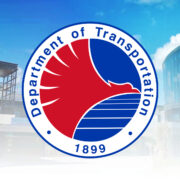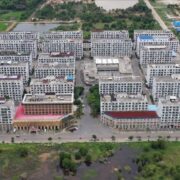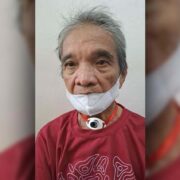Dysfunctional transport systems

My commute to school has been challenging since we lost the point-to-point (P2P) bus that ran from One Ayala to UP Town Center. It provided an economical and comfortable ride for many people in the south who had to make their way north to Ateneo, Miriam, and University of the Philippines (UP). Before the P2P bus, the Ateneo administration had a failed experiment with chartered buses plying the Loyola Campus-BGC and Fairview routes in the afternoon to encourage people to try alternative transport. Most Ateneo students, especially those in basic education, are ferried to and from school in private cars—one car per student. Parents were not keen on their children taking a point-to-point bus, even one that had a security guard on board.
I tried this Ateneo bus once, giving up because in the late afternoon, transport out of BGC is difficult. I walked all the way from Market Market to Ayala to get home. Doing so led to the realization that our roads are made for cars, not people. Sidewalks along McKinley narrowed at some points, were uneven in others, and non-existent in a few stretches. Although McKinley is tree-lined and low-density because of the green of Manila Golf Club and Forbes Park, what little fresh air produced by the trees was obliterated by vehicle exhaust.
I was mistaken to think that UP, Ateneo, and Miriam would be proactive and discuss having a limited P2P run from Makati to Katipunan to ferry students and staff in the morning and afternoon. That said, I have two options. Going door-to-door with Grab or taking public transport. Grab fare, on average, is P520 one-way, and that’s the discounted senior fare. However, many Grab drivers cancel the booking as soon as they see that the destination is Ateneo. Cancellation is not for the Edsa traffic, but the tedious security protocol imposed on vehicles that do not have the paid access sticker. No exceptions even for card-carrying faculty on Grab, who have gone through a long line of cars without stickers for security checks. My return trip requires walking out of campus to book a ride across the road on the southbound lane of Katipunan. Many Grab drivers tell me that if the pick-up point is inside the Ateneo campus, they cancel because of the hassle. With my return ride at P400-500 discounted, that’s P1,000 to get to work.
The cheaper option is public transport: MRT from Ayala to Cubao costs P10 (discounted) and from Cubao to Katipunan, P8 (discounted). From the station on Aurora Boulevard is a long walk to a small street where I hail a tricycle to campus. Trike fare is P50 because I don’t take senior discount and give manong driver a tip. Total fare is P68 or P136 round trip, not bad if you don’t mind a lot of walking. Mercifully, the LRT and MRT connect within the secure, air-conditioned Gateway Mall. We should find the idiots who plotted these rail lines and did not consider an easier connection. While there is a special place reserved for them in hell, they should be held accountable to the commuters by heavy fines and jail time on earth! Another obstacle course is the MRT-LRT connection on the Pasay-Edsa intersection. I will leave that to your imagination.
Transportation Secretary Vince Dizon, who has his feet and ears on the ground, has made commuting easier. He removed the obstacles at entrances to MRT and LRT stations and investigated rogue taxi drivers at the airport, as well as those dumbbells who flout traffic rules for online content. Most of Dizon’s reforms are simple, but then common sense is not as common as we would wish. Doesn’t the Transportation Secretary have better things to do than check on our daily commute? Shouldn’t that be left to the underlings on the ground who are not doing their job? The root of the problem is misplaced Filipino patience and resilience; commuters should say “tama na, sobra na, palitan na” and demand efficient public transport.
My Facebook post last Friday about an unusual delay on the MRT line earned over 17,000 reactions, more than what I get for my history posts. The Ayala-Cubao MRT ride takes less than 20 minutes, but last Friday, it took almost an hour. Trains stopped for a long time at each stop and ran at low speed. The driver repeatedly pleaded for patience and understanding without an explanation for the delay. On arrival at the Cubao station, the platforms were empty because everyone was herded up at the entrance, with a long line of commuters waiting from street level to the turnstile.
If an issue, beyond their control, was detected before 8 a.m., when I boarded, why weren’t commuters advised to take alternative transport? There was no notice until 10:05 a.m., when the DOTR-MRT-3 Facebook page proudly announced that operations were back to normal. No explanation. No apology. In Japan, train and subway operators apologize for a minute delay and even issue certification for those who need it for school or work. Is it asking too much to aspire to that level? Our problem is that commuters just shrug their shoulders and move on. We normalize bad service instead of demanding better. When will our dysfunctional transport system become history?
—————
Comments are welcome at aocampo@ateneo.edu
Ambeth is a Public Historian whose research covers 19th century Philippines: its art, culture, and the people who figure in the birth of the nation. Professor and former Chair, Department of History, Ateneo de Manila University, he writes a widely-read editorial page column for the Philippine Daily Inquirer, and has published over 30 books—the most recent being: Martial Law: Looking Back 15 (Anvil, 2021) and Yaman: History and Heritage in Philippine Money (Bangko Sentral ng Pilipinas, 2021).





















Gaza ‘takeover’: Another horrific Middle East chapter